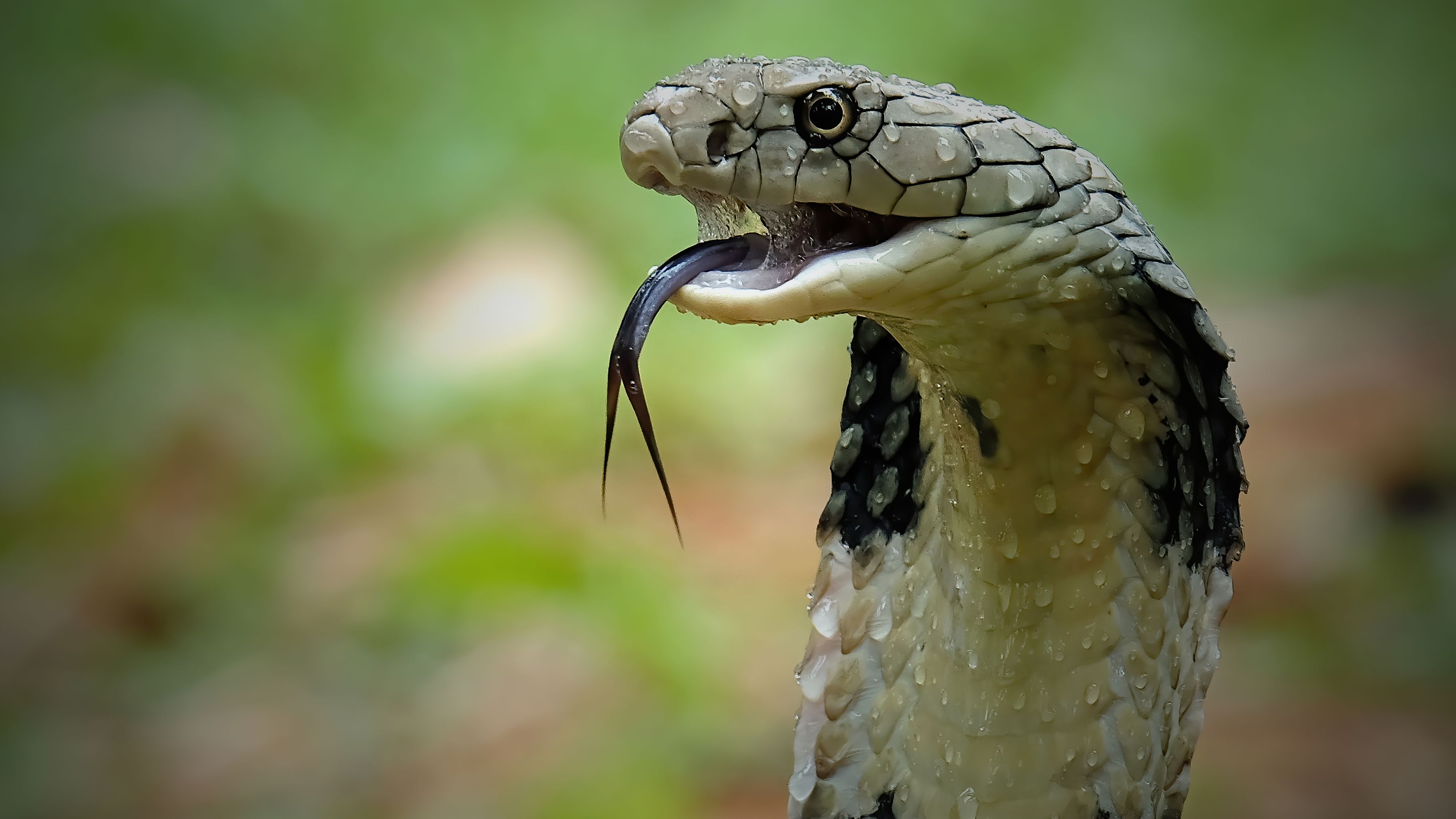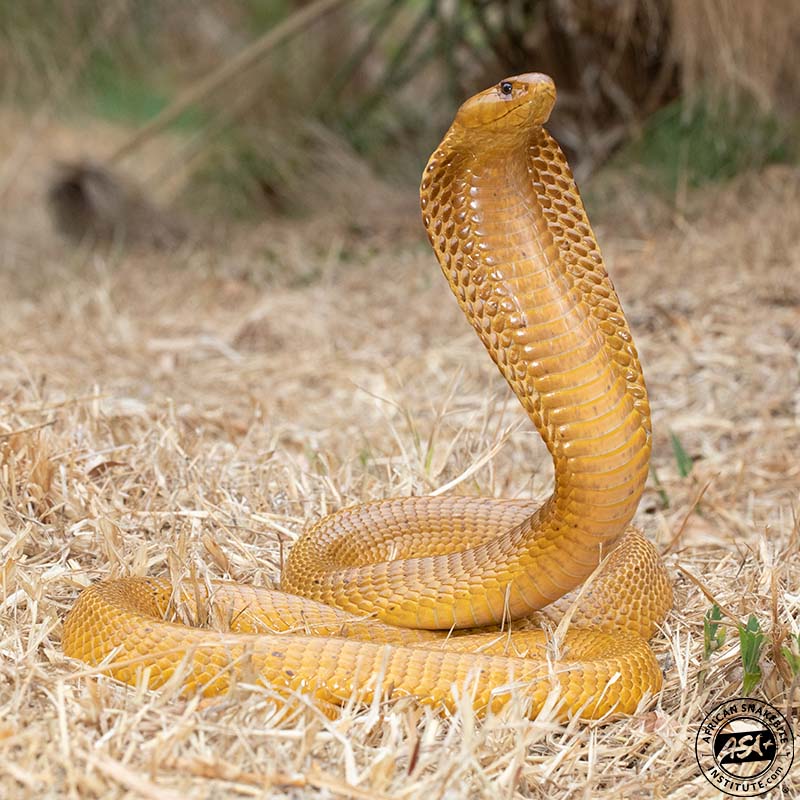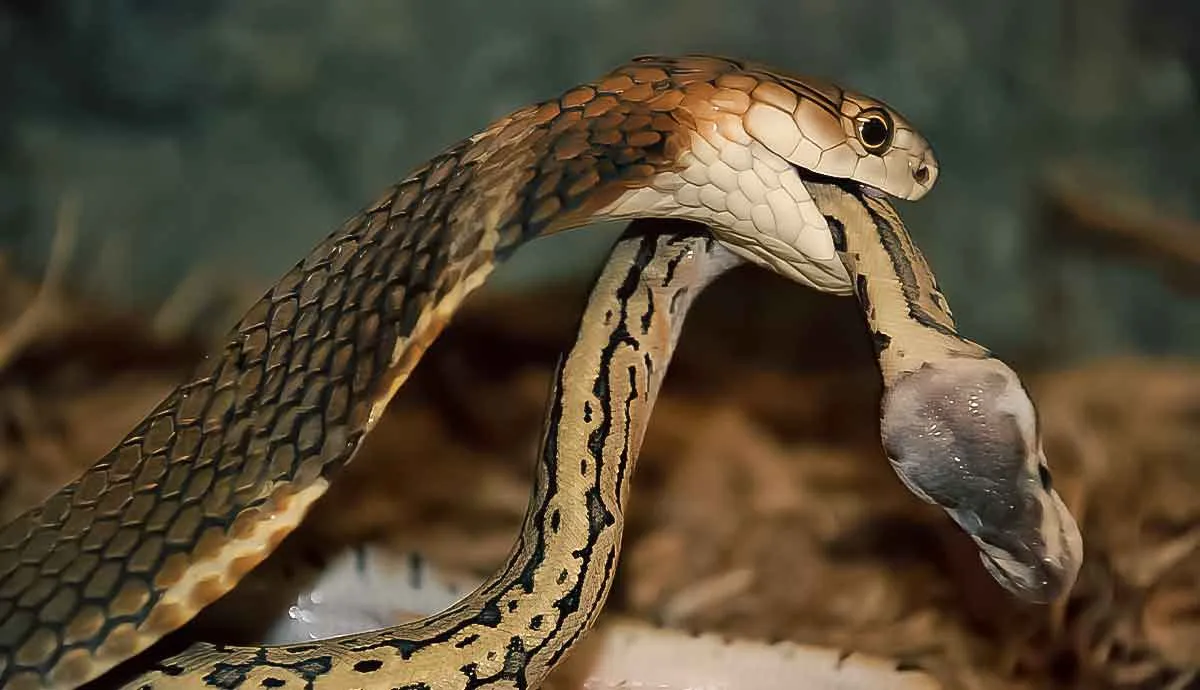Cobras: The Enigmatic Serpents of Myth and Reality
Cobras, with their iconic hooded appearance and venomous bite, have long captured the human imagination. These serpents, belonging to the family Elapidae, are known for their potent neurotoxic venom, as well as their striking behavior and cultural significance. In this exploration, we delve into the multifaceted world of cobras, uncovering their biology, ecology, cultural symbolism, and the complex relationship between humans and these enigmatic reptiles. Anatomy and Adaptations
Anatomy and Adaptations
Cobras are a diverse group of snakes found primarily in Africa and Asia, with several species inhabiting other parts of the world, including the Americas. They are characterized by their distinctive hooded appearance, which is created by the expansion of ribs and skin behind the head when the snake feels threatened or agitated. This hood serves as both a defensive display and a warning signal to potential predators and rivals.
One of the most defining features of cobras is their potent venom, which is delivered through hollow fangs located in the front of their mouths. This venom is primarily neurotoxic, targeting the nervous system of their prey and incapacitating them within minutes. While cobras are generally shy and elusive animals, they will not hesitate to defend themselves if threatened, often employing their venomous bite as a last resort.
Despite their fearsome reputation, cobras play a vital role in their respective ecosystems as apex predators, helping to control populations of rodents, insects, and other small animals. They are also an integral part of local food webs, serving as prey for larger predators such as birds of prey, mammals, and other snakes.
Ecology and Behavior Cobras inhabit a wide range of habitats, including forests, grasslands, deserts, and urban areas. They are highly adaptable and can thrive in diverse environments, from the dense rainforests of Southeast Asia to the arid savannas of sub-Saharan Africa. Cobras are predominantly terrestrial but are also capable climbers and swimmers, allowing them to access a variety of prey and escape from potential threats.
Cobras inhabit a wide range of habitats, including forests, grasslands, deserts, and urban areas. They are highly adaptable and can thrive in diverse environments, from the dense rainforests of Southeast Asia to the arid savannas of sub-Saharan Africa. Cobras are predominantly terrestrial but are also capable climbers and swimmers, allowing them to access a variety of prey and escape from potential threats.
Cobras are primarily solitary animals, although they may congregate in large numbers during the breeding season or at communal roosting sites. They are generally nocturnal or crepuscular, hunting for prey under the cover of darkness and seeking shelter during the heat of the day. Cobras are opportunistic feeders, preying on a variety of animals, including rodents, birds, frogs, lizards, and other snakes.
During the breeding season, male cobras engage in elaborate courtship displays to attract females, including ritualized combat with rival males and intricate mating dances. After mating, female cobras will lay eggs in a concealed nest site, such as a burrow or hollow log, and guard them until they hatch. Depending on the species, a clutch of cobra eggs may contain anywhere from a few to several dozen eggs.
Cultural Symbolism and Mythology Cobras have played a prominent role in human cultures and mythologies for millennia, symbolizing both reverence and fear. In many ancient civilizations, cobras were revered as symbols of fertility, protection, and wisdom, often associated with deities and cosmic forces. In Hindu mythology, the cobra is closely linked to Lord Shiva, the god of destruction and regeneration, who is often depicted wearing a cobra around his neck.
Cobras have played a prominent role in human cultures and mythologies for millennia, symbolizing both reverence and fear. In many ancient civilizations, cobras were revered as symbols of fertility, protection, and wisdom, often associated with deities and cosmic forces. In Hindu mythology, the cobra is closely linked to Lord Shiva, the god of destruction and regeneration, who is often depicted wearing a cobra around his neck.
In ancient Egypt, cobras were venerated as symbols of royalty and divine authority, with the uraeus—a stylized representation of a cobra—adorned on the crowns of pharaohs as a symbol of protection and sovereignty. The cobra's association with the sun god Ra and the protective goddess Wadjet further solidified its importance in Egyptian culture and religion.
However, cobras also evoke fear and danger in many cultures, owing to their venomous bite and unpredictable behavior. In Hinduism and Buddhism, the cobra is often depicted as a fearsome guardian or adversary, capable of inflicting harm on those who cross its path. In African folklore, cobras are often portrayed as malevolent spirits or trickster figures, capable of shape-shifting and casting spells on unsuspecting victims.
Human-Cobra Interactions and Conservation Challenges The relationship between humans and cobras has been shaped by both reverence and conflict throughout history. While some cultures view cobras as sacred or mystical beings to be revered and protected, others see them as dangerous pests to be eradicated. In many parts of the world, cobras are hunted and killed out of fear or superstition, leading to declines in their populations and loss of biodiversity.
The relationship between humans and cobras has been shaped by both reverence and conflict throughout history. While some cultures view cobras as sacred or mystical beings to be revered and protected, others see them as dangerous pests to be eradicated. In many parts of the world, cobras are hunted and killed out of fear or superstition, leading to declines in their populations and loss of biodiversity.
Furthermore, habitat loss, pollution, and climate change pose significant threats to cobra populations worldwide. Deforestation, urbanization, and agricultural expansion have fragmented and degraded cobra habitats, reducing their access to food, shelter, and breeding sites. Pollution from industrial runoff, pesticides, and plastic waste further threatens their survival, contaminating water sources and poisoning their prey.
Climate change is also exacerbating the challenges facing cobras and other reptiles, altering temperature and precipitation patterns, and disrupting ecosystems. Rising temperatures and prolonged droughts increase the frequency and intensity of wildfires, destroying critical habitat and reducing prey availability. Additionally, extreme weather events such as floods and cyclones can inundate nesting sites and wash away eggs, further impacting population dynamics. Conservation efforts aimed at protecting cobras and their habitats are underway in many parts of the world, led by governments, conservation organizations, and local communities. These initiatives include habitat restoration projects, captive breeding programs, public education campaigns, and legislation to regulate the trade and exploitation of cobras and other reptiles.
Conservation efforts aimed at protecting cobras and their habitats are underway in many parts of the world, led by governments, conservation organizations, and local communities. These initiatives include habitat restoration projects, captive breeding programs, public education campaigns, and legislation to regulate the trade and exploitation of cobras and other reptiles.
In conclusion, cobras are iconic symbols of the natural world, revered for their beauty, grace, and mystique. From their striking appearance and potent venom to their cultural symbolism and ecological importance, cobras occupy a unique place in the human imagination. However, the survival of cobras and other reptiles is threatened by a range of human-induced and environmental pressures, underscoring the urgent need for conservation action to protect these enigmatic creatures for future generations to admire and appreciate.






































